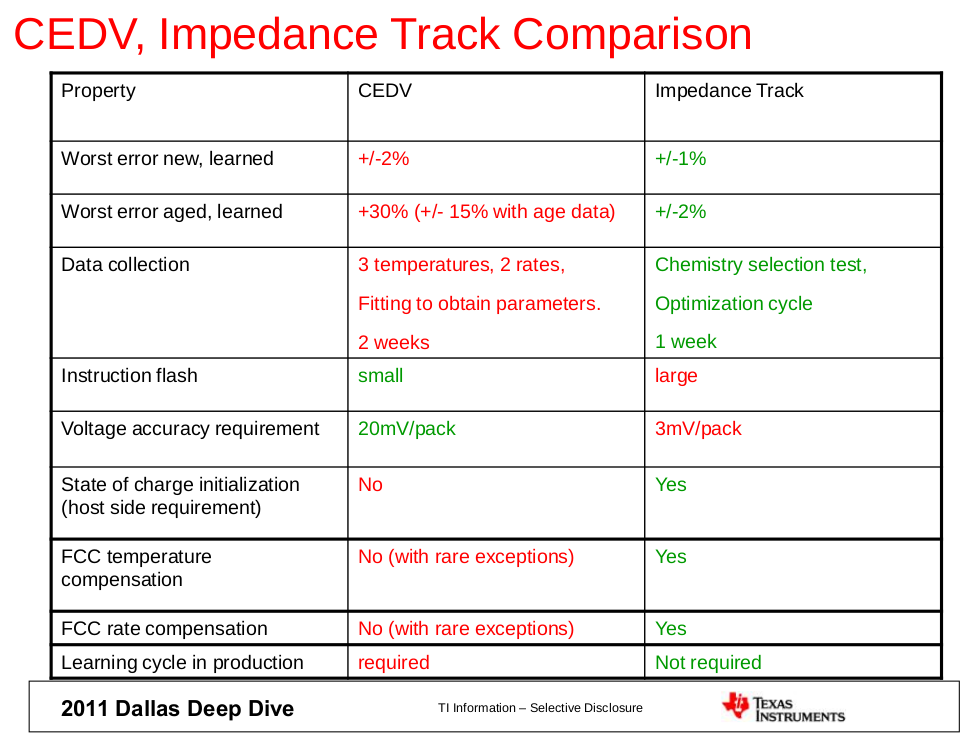Other Parts Discussed in Thread: BQ40Z50
Slide 36 from 2011 Dallas Deep Dive tutorial on Gauging Algorithm Comparisons provides a side-by-side comparison table of CEDV vs Impedance Track algorithms. The 'Worst error aged, learned' property of CEDV is given as +30% (+/- 15% with age data), which is pretty high and is substantially higher than that of Impedance Track. I would like to ask a few related questions.
1. What exactly does 'Worst error aged, learned: +30% (+/- 15% with age data)' mean? Does 'learned' imply a learning cycle has been performed? What's the age data? Is it number of cycles?
2. What are the conditions that result in the worst case error of 30% for aged batteries?
I know that CEDV updates FCC when the battery discharges to about 7%, so does one arrive to the worst case estimate by never allowing qualified discharges or is there something else involved?
3. Is this error accounted for in MaxError() that bq4050 reports? I.e. if my battery aged and I have the worst case +30% error, is the output of MaxError() going to be 30%?
Our application demands very few relaxation periods and high (5-10C) discharge currents, it seems a CEDV gauge such as bq4050 suits it better than bq40z50.
Thank you in advance,
Vasily


